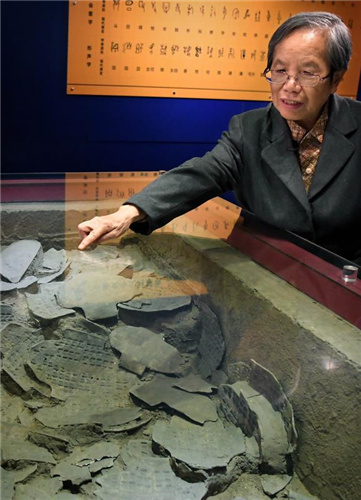

The dig lasted for a year, and followup work of the second major discovery almost 12 years.
More time-consuming than the excavation was the cleaning, classification and paper work, she says.
"In college, I didn't study ancient Chinese, so I did fieldwork in the morning and studied ancient Chinese characters in the evening."
In 2003, five books about the findings were published. Three have detailed presentations of the 689 bone artifacts, and the latter two volumes are explanations of the inscriptions on them. The process of excavations is also illustrated in the book.
Among thousands of oracle bones Liu and her team found, her favorite is one that's about 20 centimeters long and 12 centimeters wide, upon which is carved a record of a royal family's hunting activities.
"What I love about that particular specimen is that the shape is so beautiful and the inscriptions on it are complete."
Liu's passion for oracle bones and their inscriptions have continued to burn years after she retired, and as she talks, she points to one of the books she compiled.
Her 2006 work Jiaguwen Shuji Tiyao ("a guidance to the studies of oracle bones") is a guide to academic studies of oracle bone inscriptions not just in China, but also abroad.
"Scholars of such inscriptions need to work more closely with those in other disciplines, including ancient Chinese, archaeology, ethnography and computer science," she says.